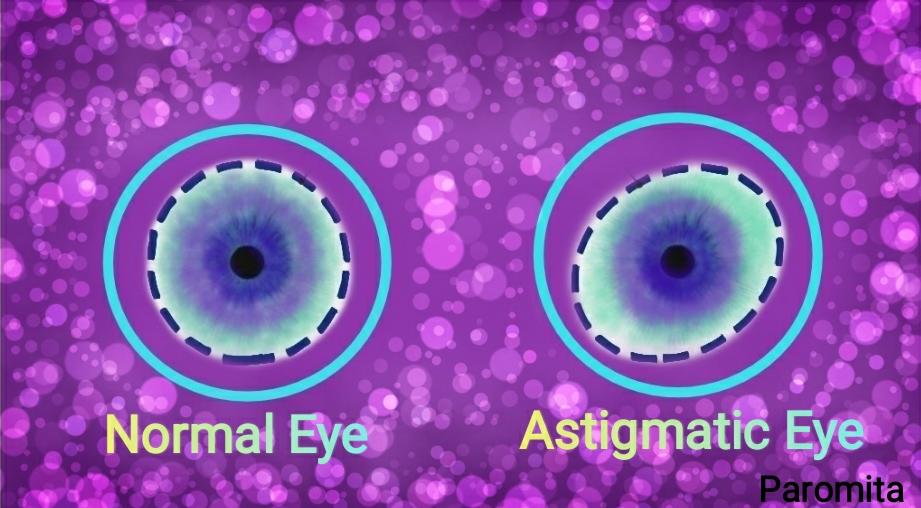Eyes are a couple of sense organ in humans which help us in seeing objects clearly. But when the eye is unable to focus light on the retina and the object is not seen clearly then it is called refractive error of eye. Astigmatism is a type of refractive error.
So, now let’s discuss about Astigmatism –
Astigmatism comes from the Greek word where “a” meaning “absence” and “stigma ” meaning “point “. Astigmatism is defined as the optical condition of the eye where the power of refraction in two or more meridian differs. The light consequently can not be brought to a point focus on retina. This is due to the presence of toroidal instead of spherical curvatures of the refracting surface of the eye and the change of curvature is gradual from one meridian to another and in uniform increments. Each meridian has a uniform type of curve. If, however, the curvature in different meridian is irregular and conforms to no geometrical figure the astigmatism is irregular. Irregular astigmatism may be due to one or more of the several factors.
In this type of refractive error, the incident parallel rays do not come to a point focus upon the retina due to refraction varies in different meridians of the eye.
- Factors that may increase your chance of Astigmatism —
- Heredity – a family history of astigmatism
- A disease history of corneal scaring or thinning
- Low birth weight
- Advancing age
- Corneal scarring due to injury
- Corneal thinning
- Pre-existing refractive errors of the eye such as Myopia or Hypermetropia
- Severe allergies resulting in constant rubbing of the eyes and Diabetes
- History of excessive nearsightedness or farsightedness.
- Etiology types of Astigmatism
- Corneal astigmatism
- Lenticular astigmatism
- Retinal astigmatism
- Corneal astigmatism: it occurs when cornea is curved more steeply in one direction than in another. It constitutes the most common cause of astigmatism. It is usually Congenital. Acquired corneal astigmatism is also not infrequent, but it is often irregular. Example – keratoconus

- Lenticular astigmatism: It is comparatively rare. It may be of the three types:
- Curvatural Astigmatism: it is a result of a difference in curvature in the lens. Small amount of Curvatural astigmatism due to congenital abnormalities of curvature of lens is frequently seen. Example- lenticonus
- Positional Astigmatism: it is due to congenital tilting or oblique placement of lens. Varying degree of Positional Astigmatism occurs in congenital or traumatic subluxation of the lens.
- Index Astigmatism: it is due to inequalities of refractive index of lens in different meridian in patients suffering from diabetes and those developing nuclear sclerosis and or cataract. It is the cause of polyopia. It is also seen in early. Example- cataract, nuclear sclerosis.

- Retinal astigmatism: It is due to oblique placement of macula may also be seen occasionally.
For clear, crisp vision, all the parts of our eye must be perfectly aligned so that when the light enters, it hits the centre of our retina. Astigmatism is a type of refractive error that occurs due to imperfections in the shape of Cornea, which alters the direction of the light and affects the clarity of our vision.
Your Astigmatism may be an inherited trait you were born with. It doesn’t always cause significant vision changes and therefore can go undiagnosed if you don’t get regular, comprehensive eye exams.
You can also develop astigmatism as an adult due to an injury to your eye, or from and underlying eye disease such as keratoconus, which occurs when your cornea tissue thins out and bulges outward. shape and size of our eyelids can also cause Astigmatism.
Eye health is an important part of overall health. Our eyes allow us to feel the beauty of the world. So we should examine our eye to keep healthy and vision intact.










